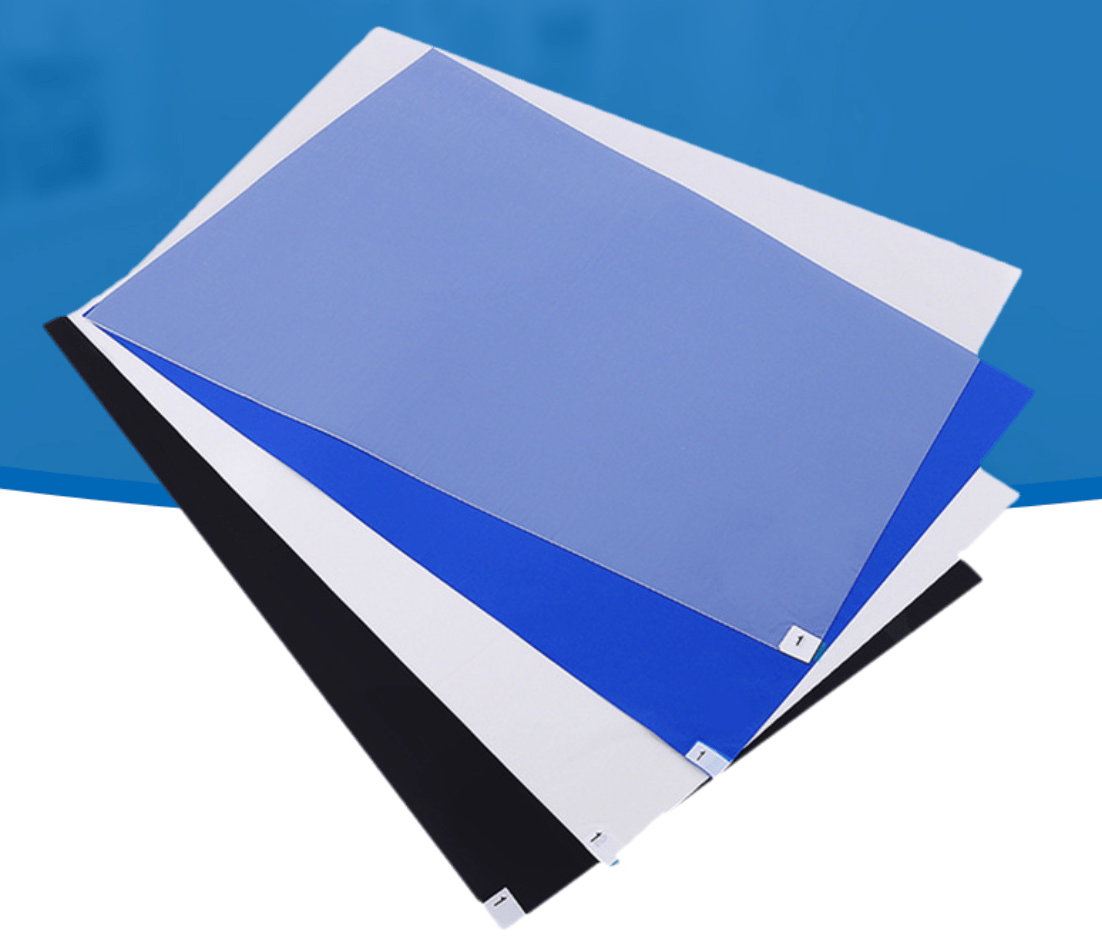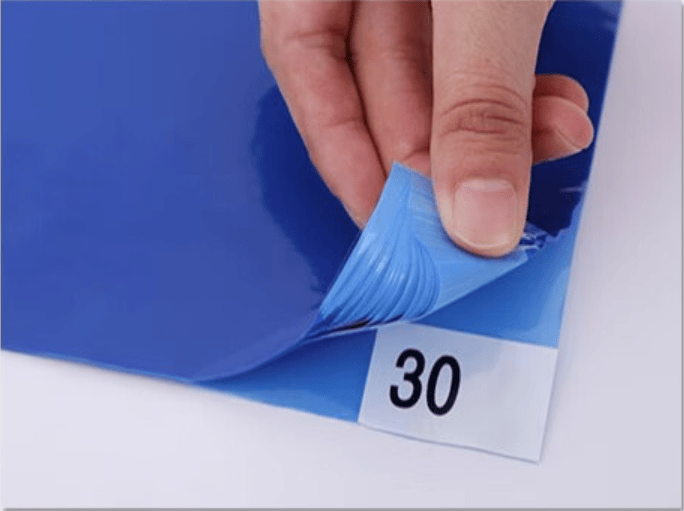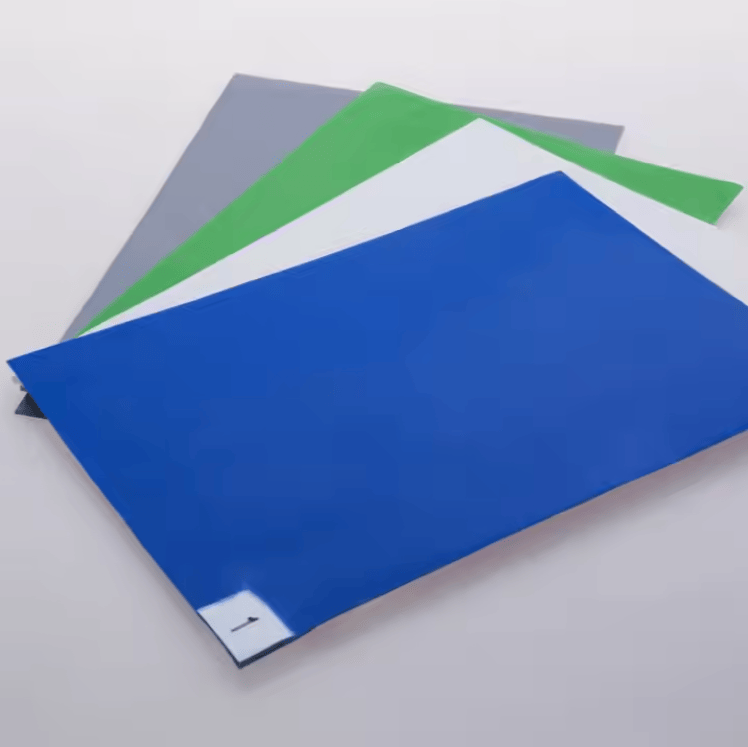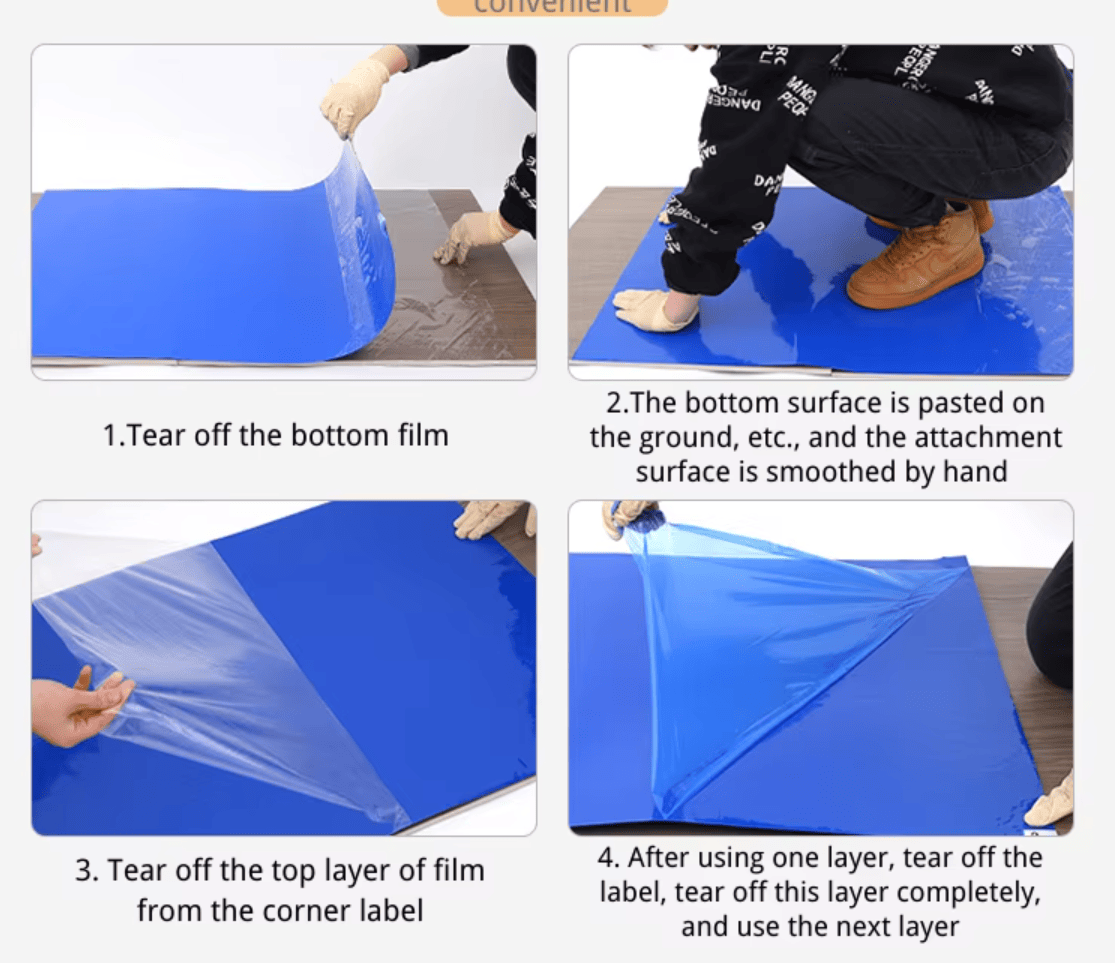![]()

Sticky walk-off mats are designed to capture dirt, dust, and debris from shoes as people walk across them, preventing contaminants from being tracked into sensitive areas like cleanrooms, offices, labs, or homes. Choosing the right sticky walk-off mat is essential for effective contamination control. Here’s a step-by-step guide on how to choose the best sticky walk-off mat for your needs:
The type of environment where the sticky walk-off mat will be used will heavily influence your choice:
Cleanrooms or Labs: For environments where sterility and contamination control are crucial, you need low-tack, residue-free sticky mats. These mats should capture fine dust particles without leaving adhesive on shoes or floors.
Construction Sites: For construction zones, where dirt, mud, and heavy debris are common, you'll need high-tack mats that can capture larger particles from shoes and equipment. These mats need to withstand rough conditions.
Office or Commercial Spaces: In places like office buildings, retail stores, or meeting rooms, you’ll want a medium-tack sticky mat. It’s effective for trapping general dust and dirt without leaving sticky residue.
Home Use: For home entrances or indoor areas where dirt is tracked in from outdoors, you’ll want a mat that captures mud, sand, or debris without damaging the flooring.
The level of foot traffic will influence the type of mat you need:
High-Traffic Areas: In environments with high foot traffic, such as construction sites, factories, or cleanrooms, you’ll need mats with more layers (30–60 sheets). These mats will last longer and can be peeled off layer by layer as they get dirty.
Low-Traffic Areas: For low-traffic environments, such as office spaces or residential areas, mats with fewer layers (10–20 sheets) may suffice. These will be more cost-effective but require more frequent replacement.
The adhesive strength of the mat determines how well it captures dirt, dust, and debris. The tackiness should match the environment’s level of contamination and the type of dirt being tracked in.
High-Tack Adhesive: Ideal for construction zones or industrial environments where mud, gravel, and large debris are common. These mats are strong enough to remove heavier contaminants from shoes and boots.
Medium-Tack Adhesive: Suitable for general-purpose environments like offices, storefronts, and conference rooms where moderate dirt and dust are expected. It will trap light dirt without being too sticky or leaving residue behind.
Low-Tack Adhesive: Essential for cleanrooms, medical facilities, or other highly-sensitive environments where contamination must be minimized. Low-tack mats will capture fine dust without leaving residue and won’t disturb the environment.
The material of the sticky walk-off mat will impact its durability and effectiveness. The choice of material should depend on the type of environment and traffic conditions.
Vinyl or Polyethylene: Most sticky mats are made from vinyl or polyethylene, as they are durable, flexible, and resistant to wear. These materials are commonly used in office settings, construction sites, and cleanrooms.
Heavy-Duty Mats: For rugged environments or areas with high foot traffic and rough conditions, look for mats made from heavy-duty materials such as rubber or thicker vinyl. These are ideal for construction sites or warehouses where the mat may need to withstand more wear and tear.
Sticky mats typically come in multiple layers (each of which can be peeled off once dirty). The layer count affects how long the mat will last and its effectiveness in capturing dirt.
High Layer Count: If you have high-traffic areas, choose mats with 30–60 layers. These mats will last longer before needing to be replaced and are more efficient for heavy use.
Low Layer Count: For low-traffic or temporary environments, mats with 10–20 layers are often sufficient.
Size: Ensure the mat covers the entire entryway or walk-off area. Standard sizes are 18” x 36” or 24” x 36”, but you can also find mat rolls that can be cut to custom sizes for larger or unique spaces.


One of the most important factors when choosing sticky mats is ensuring that the adhesive doesn’t leave residue on shoes or floors.
Residue-Free Mats: Look for mats with non-residue adhesives, especially for sensitive areas like cleanrooms, labs, or medical spaces. These mats trap dust and debris without transferring any sticky residue to shoes or the floor.
Safe for Floors: For environments like offices, make sure the adhesive is strong enough to capture dirt but gentle enough not to damage hardwood floors, tiles, or carpets.
The sticky mat should be easy to maintain and replace. Consider how often you need to change or peel off layers, and how easy it is to dispose of the mat.
Peel-Off Layers: Choose mats with peel-off layers that allow for easy removal of the soiled layer to expose a clean one underneath. This is especially useful in high-traffic areas where the mats need to be replaced frequently.
Disposable: Most sticky mats are designed to be disposable once all layers are used. Check if the mat can be disposed of easily and replaced without hassle.
Cleaning Options: If you want a reusable mat, choose one that can be washed or cleaned, though this is less common for sticky walk-off mats, which are usually designed for single-use.

The appearance of the mat may be important in some environments, especially in offices, retail spaces, or corporate buildings.
Color Options: Sticky mats typically come in blue, gray, or white. These neutral colors blend well with most environments.
Visible vs. Discreet: If you need the mat to be visible for contamination control purposes (like in construction zones), darker colors (like dark gray or black) may be preferred as they hide dirt better. For clean environments, light-colored mats are usually preferred.
If sustainability is a priority, look for mats made from eco-friendly materials or those that can be recycled after use.
Recyclable Mats: Some sticky mats are made from recycled materials or designed to be recyclable, making them more environmentally friendly.
Biodegradable Options: Some brands offer biodegradable mats, which break down more easily in landfills and are better for the environment.
Environment: Match the mat to the setting (cleanroom, construction zone, office, home).
Adhesive Strength:
High-tack for heavy debris (construction zones).
Medium-tack for general use (offices).
Low-tack for sensitive environments (cleanrooms).
Traffic Volume:
High-traffic areas require mats with more layers (30–60 layers).
Low-traffic areas can use mats with fewer layers (10–20 layers).
Material: Choose vinyl or polyethylene for standard use, or heavy-duty rubber for tougher environments.
Size: Ensure the mat covers the entryway completely. Consider custom sizing for larger areas.
Residue-Free Adhesive: Ensure the mat won’t leave adhesive residue on shoes or floors.
Ease of Use: Choose mats that are easy to maintain, with peel-off layers and disposable features.
Color: Choose a color that blends with your environment (e.g., neutral colors for cleanrooms or darker colors for construction zones).
Environmental Impact: Consider eco-friendly or recyclable mats if sustainability is a concern.
Choosing the right sticky walk-off mat is essential for maintaining a clean and contaminant-free environment. Consider factors such as traffic volume, adhesive strength, mat material, and size to find the best mat for your space. Whether you're protecting a cleanroom, preventing dirt in an office, or handling heavy debris on a construction site, the right mat will ensure that dirt and contaminants are captured efficiently while maintaining cleanliness and safety.

Delivery is prompt!
By 10-year industry experts!
Diverse payment methods available!
Unbeatable cost performance!